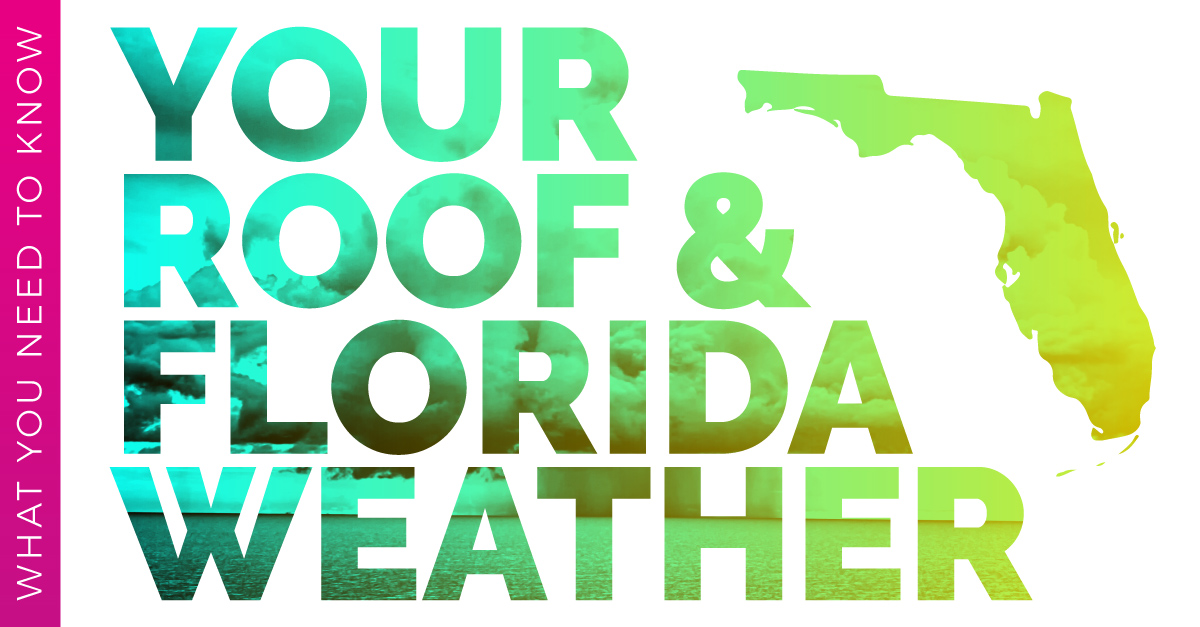In Florida, both sunshine and rain do real, measurable damage to a commercial building’s roof. Combine them with a little wind, and you have three weather patterns that do the most damage to commercial roofs.
Sun
Tampa’s northern neighbors go through entire seasons where the sun just glances down at a low angle above the horizon. A low sun angle means sunlight is spread over a large area and therefore is very diffuse. Not so in Tampa: our sun angle is consistently between 38° and 86° above the horizon, says the Florida Solar Energy Center.
Why should you care about sun angle? The closer to 90°, the stronger the sunlight per square meter. Sunlight has several wavelengths:
- Visible light
- Ultraviolet light
- Infrared light
Ultraviolet sunlight destroys chemicals in roofing membrane or BUR layers. Infrared light heats up your commercial roof, sending heat into your roof deck, making your energy bills higher than if the infrared light reflected back.
Wind
Most Tampa winds are gentle breezes, but some are sustained high winds. When high winds strike, they wreak havoc on any commercial roof. Wind uplift can tear apart seams, pull up flashing, turn layers from built-up roofing over, and send wind-borne debris tearing across your roof.
Tampa lies squarely in the hurricane season’s target area, with an average of 12 named hurricanes a year, says the Land O’ Lakes Patch. You have to protect your roof against wind.
According to the City of Tampa, our city’s commercial buildings lie between the 160-mph and 150-mph wind speed zones. You must take basic precautionary steps to prevent wind-borne debris from tearing off your commercial roof.
Rain
Water infiltration can come after any rain, and Tampa gets nearly four feet of rain annually, according to U.S. Climate Data. That much rain can compress deck insulation, clog internal drains and seep into weak seams on a commercial roof.
Remedies
Before fighting a war on three fronts against the sun, wind, and rain, communicate your concerns with your local roofing contractor. One remedy, such as a reflective coating applied atop your existing commercial roof to lower cooling costs, could also provide waterproofing, for example.
Careful inspection can prevent weak areas susceptible to wind uplift and water infiltration. If you need assistance battling the Florida sun, wind, and rain, please contact us today at Aderhold Roofing. We stand ready to reinforce your efforts to protect your commercial roof.

